 Orchestrator User Guide
Orchestrator User Guide
Orchestrator
The Orchestrator allows users to collect many single automated processes and define structured processing. The Orchestrator allows you to automate processing of complex process networks like a monthly close, billing processes, global payrolls or similar processes without manual effort, optionally in cooperation with other users.
This is possible thanks to process lists which can be copied easily and modified on request. The parametrization of single processes within the process list plays a fundamental role. The processes and their parameters can be localized, recognized, modified and passed through the entire structure.
Such a process list consists of:
- Time and start information
- Parameterization (process input)
- Dependencies
The processes can be structured in organizational units within the process list. Such a structure provides a clear overview, as well as the ability to define and inherit parameter values.
The process lists can be started directly from the Orchestrator. Any required data will be synchronized from the connected system(s) according to defined dependencies, during execution.
Open the Orchestrator
You can open the Orchestrator either from the Home screen or tool bar.
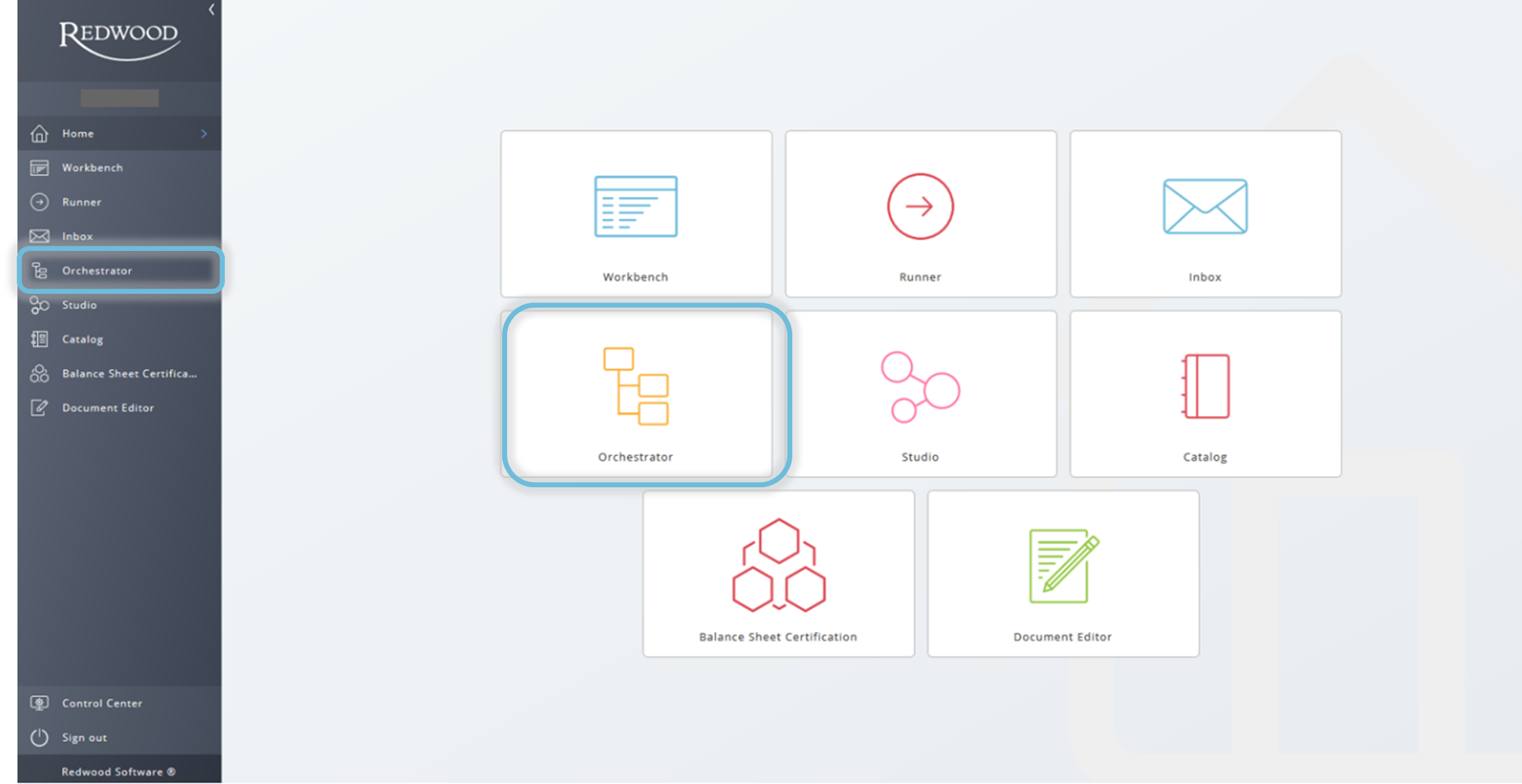
To open the Orchestrator from the tool bar click on Control Center on the left-hand bar and press the Orchestrator icon on the tool bar.
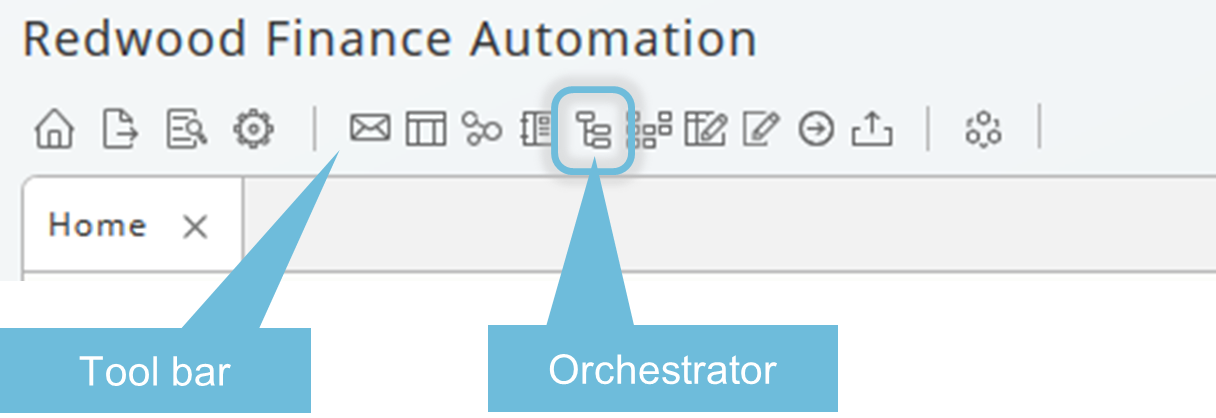
Create a Process List

To create a process list:
- Right click to use the Context-Menu or click the plus sign to select New Process List.
- Enter the name and partition to unlock the other properties that can be set.
- Name and Partition are required, Application is optional but recommended to get a structured hierarchy.
- Note: An error message will populate if the field is incorrectly filled out.
- Fill out any other process list properties as needed.
- Description: Useful description, all characters allowed.
- Responsible: The Redwood user which owns the process list. This prevents anyone but the responsible from changing the process list except admins.
- Calendar: For SAP and EBS, it is possible to set a factory calendar which will be used for all offset calculations
- Time zone: Main time zone for the process list. All tasks will be calculated based on that time zone.
- Application: The application where the process list object must be assigned. Applications are organizational criteria like folders. Applications can also have hierarchical structures.
- Partition: The partition where the process list object must be stored. Compared to applications, a partition has more security aspects. Only user who have access to a certain partition can see and probably use or maintain the process list.
- Milestones: Can optionally be defined on the right-hand side and used as filter criteria within the Workbench.
- Save the process list or go back to the overview.
- Note: The Save button is disabled when the user has no authorization to edit.
After entering the base properties, groups or single processes can be added on the left-hand side using the Context-Menu.

Adding groups builds a hierarchical or logical structure.
- Select the entry point where the group (subfolder) should be created. The highest level is the process list.
- Right click to use the Context-Menu and select either Add Group or Add Process from the dropdown list.
- Once there is a structure in place, you can choose to Copy, Cut, or Delete groups and single processes.
- Where the particular action takes place is indicated by the blue highlighted line and the red mark on the left-hand side of the group or process.
- Predecessors and successors can be defined as well to build the dependencies (see Section 1.4).
- When you add a process, the list of existing processes appears automatically. Choose one of the existing processes and the process appears in the selected group. Existing processes and groups can also be moved into the desired position using drag-and-drop functionality.
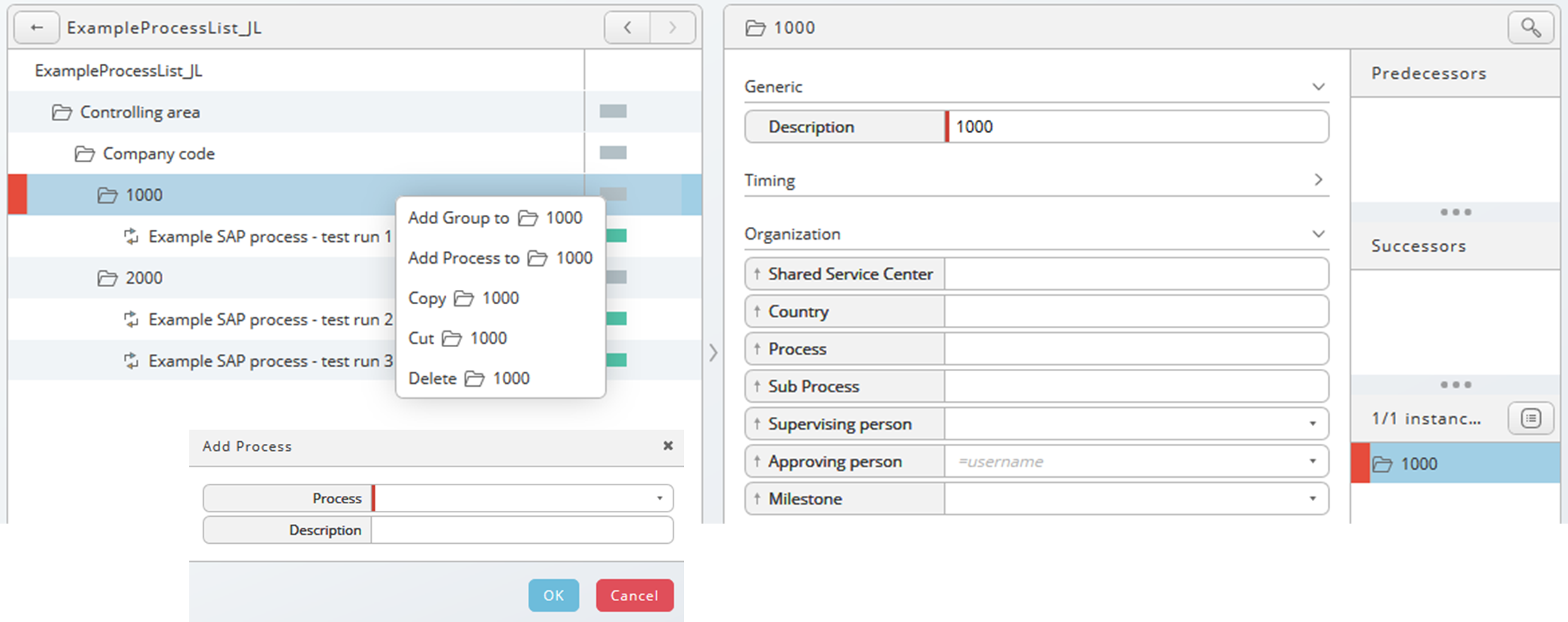
Add a Process List
Beginning in version 9.2.4, it is possible to Add a Process List to the Orchestrator as well.
- Select a group or the outer process list.
- Right-click to select Add a Process List from the Context-Menu.
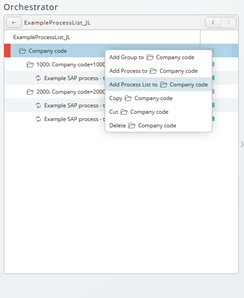
Parameters and Milestones can be made externally available from the added process list. Parameter values can be set in the outer process list which and passed on to the inner, nested process list. For example, for process lists that have parameters filled out on a company-level, where specific parameters must be filled out by the holding company.
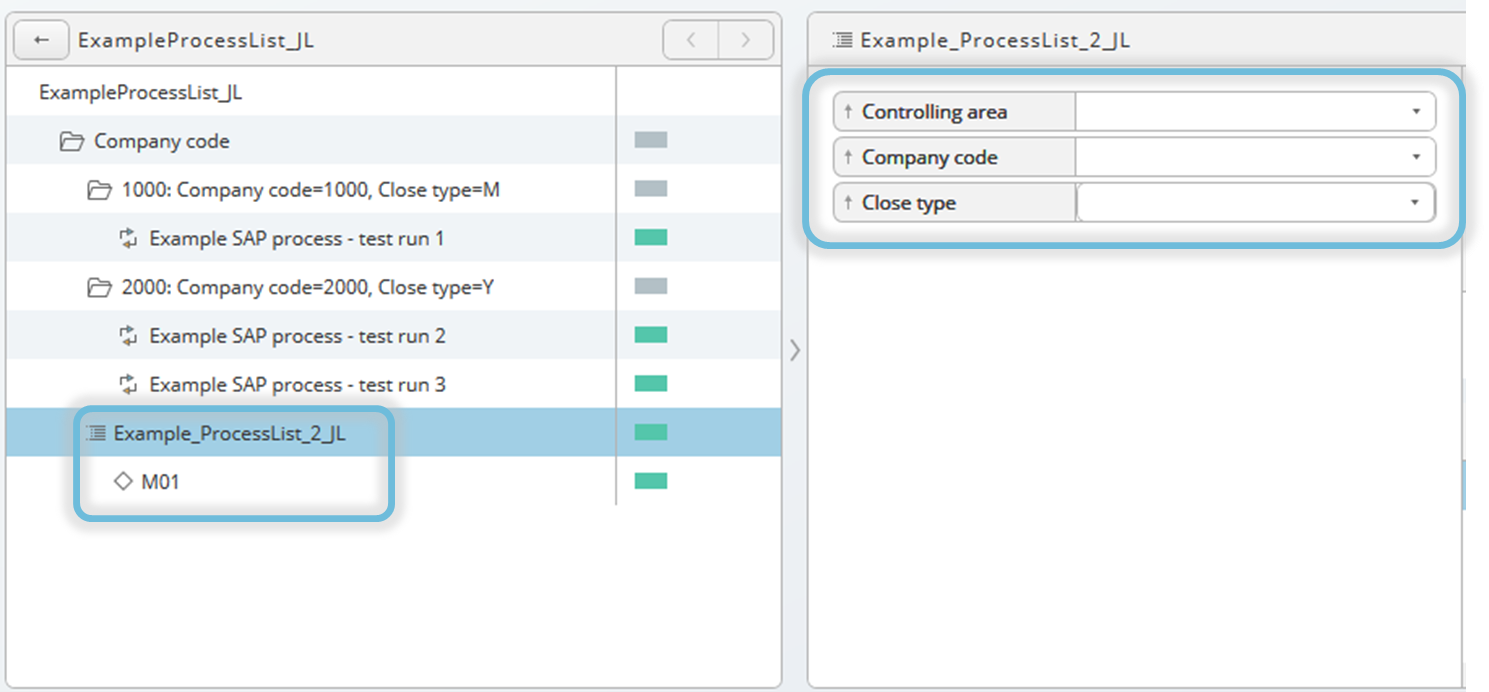
Externalized milestones allow you to build dependencies on certain stages in the nested process list to be reached or completed before certain tasks can be performed in the outer process list.
Which parameters and milestones are available depends on the (nested) process list configuration and the process design (see Section 1.3).
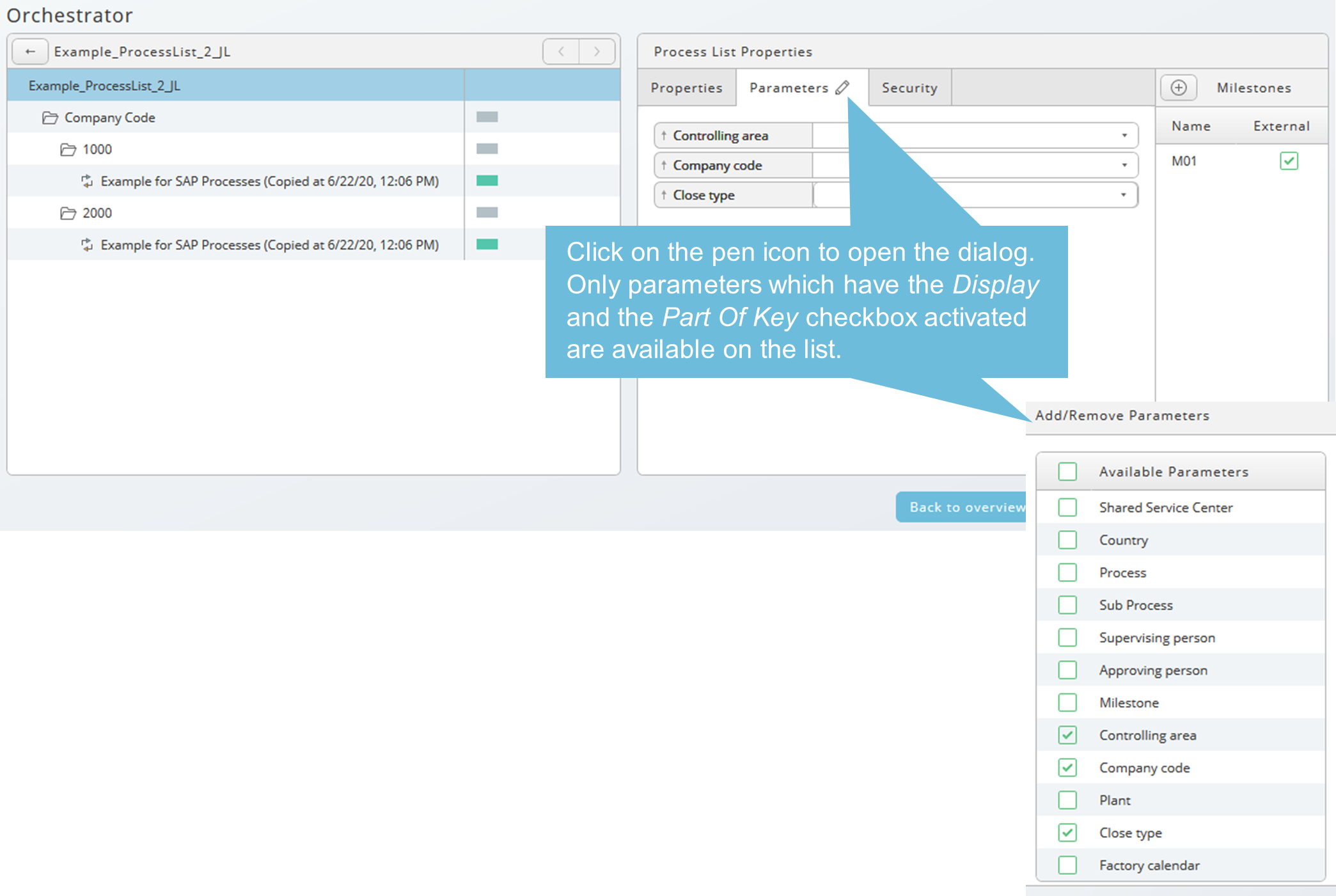
To make a milestone externally available:
- Select the appropriate process list.
- Right-click and select Edit Process List from the Context-Menu
- In the Milestones section, check the box next to External.
Parameters
Parameters appear in the middle section of the Orchestrator when a process is seleted on the left-hand side. The parameter section can vary depending on the design of the added process definition.
- Parameter values can be set on each level.
- Parameter values set on group level will be passed to lower levels.
- When process lists are nested, it is possible to externalize parameters and milestones to pass values from a higher level of the structure to a nested process list.
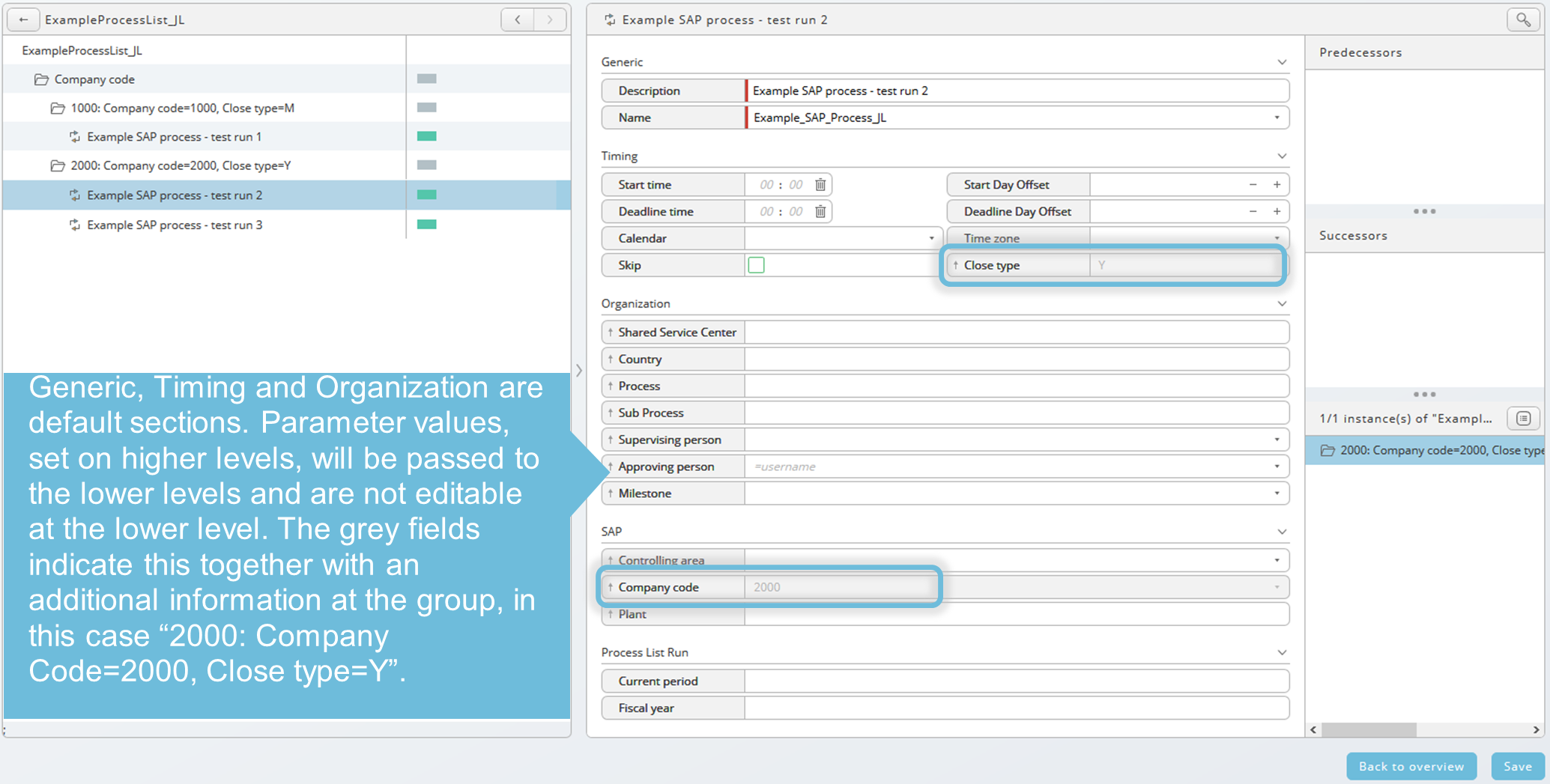
The Timing parameters correspond to the parameter Close Date, as well as the Fiscal Period and Year. These FPA parameters are required during the submission. Single processes within the process list (for example, a monthy close) can vary. When a Deadline is entered, an SLA is generated which determines if the process run has been finished in time. Calendar can be used as well, you can refer to a self-defined or SAP Calendar.
note
No immediate start* is used to schedule the processes on Hold, to avoid an immediate start (manual release required). This option is only taken into account when Put tasks on hold parameter is set to Semi. Both other options (Hold and X) will hold the initialization process of the entire process list, meaning that the entire process is paused before anything has been started, and a manual release is required. Only after a manual release all processes of the process list will appear in the TaskList Run process. In this case all processes are hold that you can release each of them manually as desired.

Milestones can be used to add an organizational criteria and can be set in the Organization section. The Supervising person is in general responsible for the execution of the process, and where the first email notification and requests are sent to. The Approving person follows the double verification principle, reviews and releases the work of the supervising person.
Parameter groups can be expanded or collapsed using the arrows to the right of the parameter group headers.
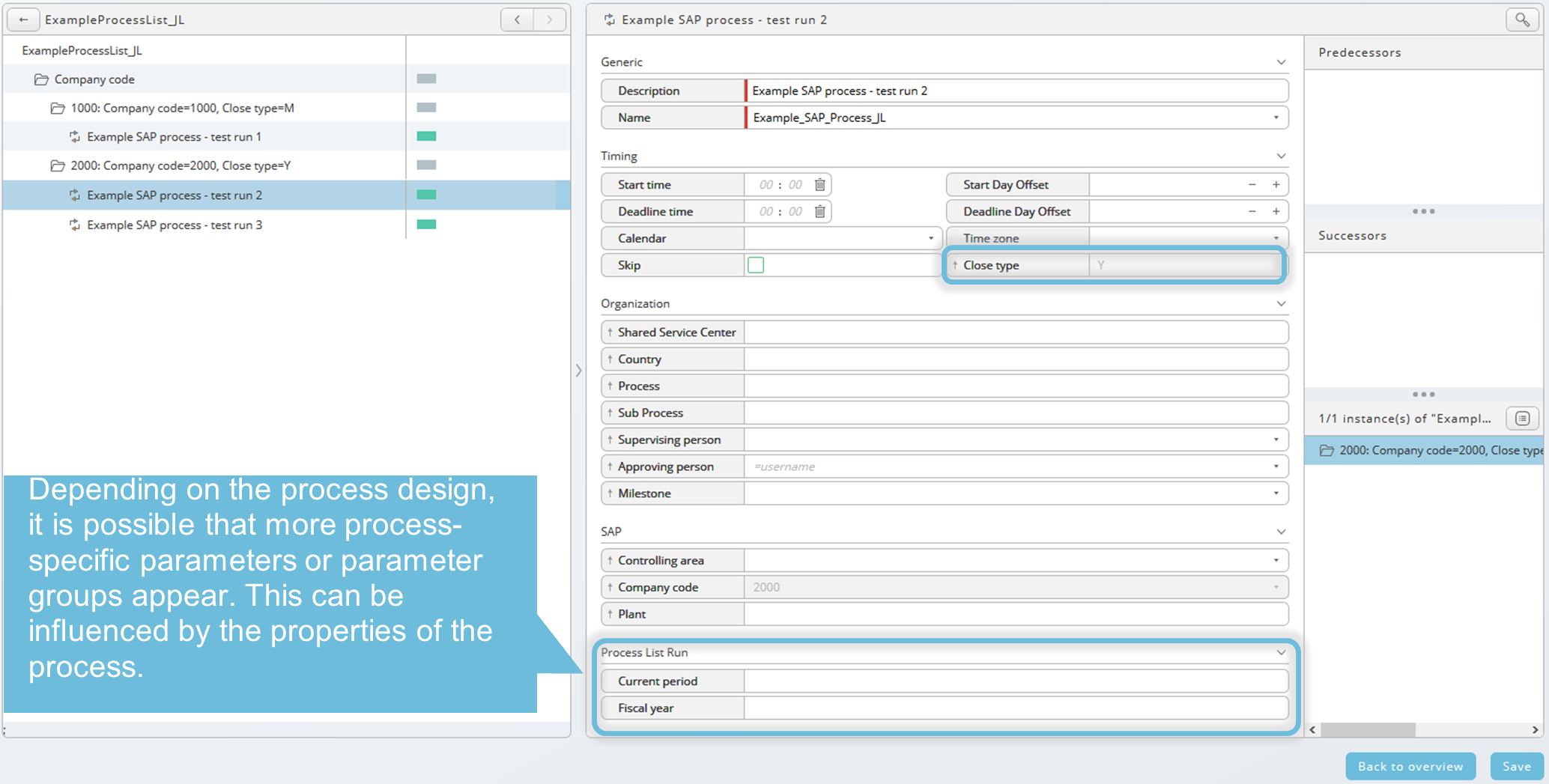
When the properties of a parameter within the process definition are set to Display and Part of Key, then such a parameter is inherited from the higher levels of the structure.
To set Display and Part of Key:
- In the left-hand navigation menu go to Definitions.
- Select Processes.
- In the Process Definitions tab that opens, select the appropriate process, and right-click to select Edit from the Context-Menu.
- Note: For this action you need privileges to edit or create process definitions.
- In the Parameters tab, select the appropriate parameter that should be inherited.
- Click the up arrow to display the lower section of the page.
- Next to Parameter Options checkmark Display and Part of Key.

In the example below, the original example process was duplicated, and the checkboxes were checked next to Display and Part of Key for the parameters Close type, Current period and Fiscal year.
For the parameter Close type the Display and Part of Key option is set, for the parameters Current period and Fiscal year only the display option. When the Part of Key option is activated, the parameter appears on higher levels of the structure.
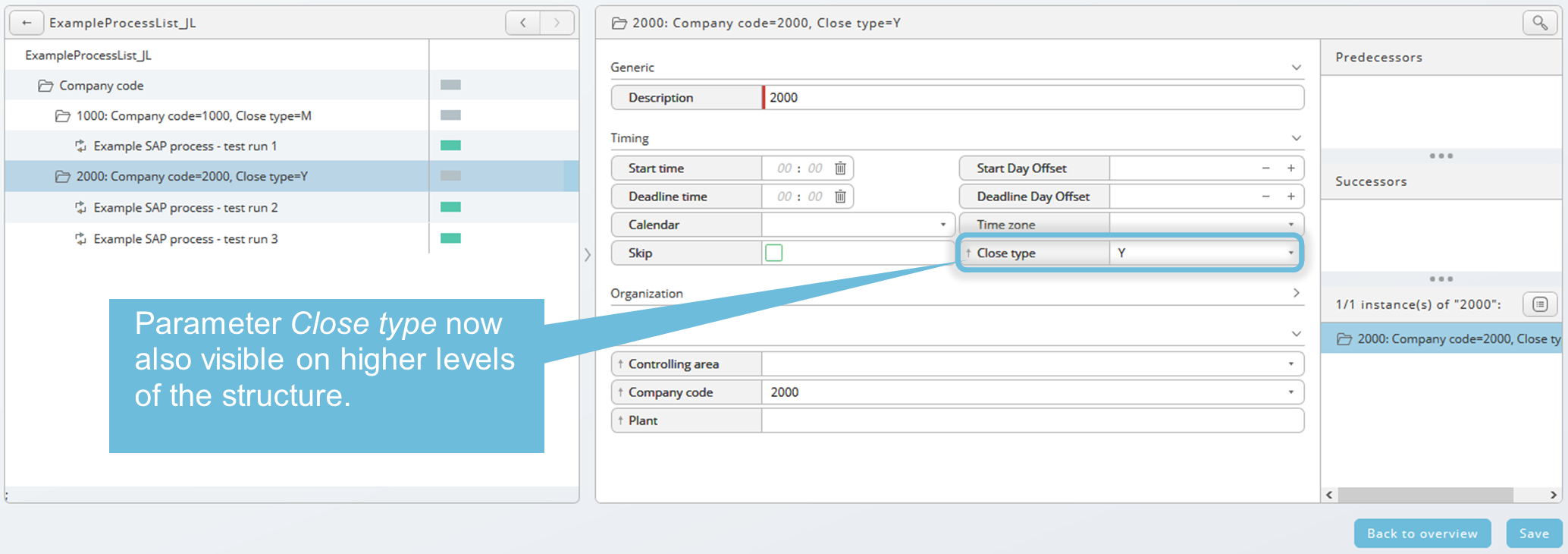
You can move single processes or entire groups within the process list using drag and drop functionality. Expand or collapse groups by double clicking.

Define Dependencies
- Select the first process. Click on the green block right beside the name. The block is now framed.
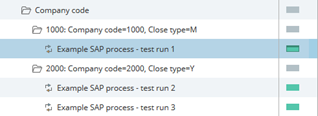
- Right click to select where you want to add the dependency. The blue highlighted process indicates the predecessor and the red mark on the left-hand side indicates the process that will be defined as a dependency.
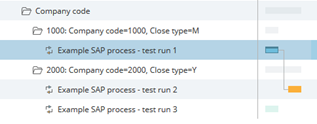
- Define the selected process as a predecessor or successor of the blue highlighted process. In the example image below, the process from the Company Code 2000 has been defined as a successor of the process from the Company Code 1000. Alternatively, use drag and drop functionality define process orchestration.
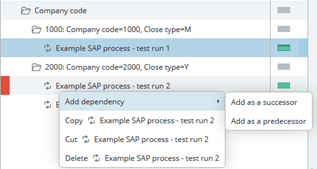
- To remove the dependency, right click on the successor. Remember, the predecessor is highlighted but the action takes place where the red mark appears.
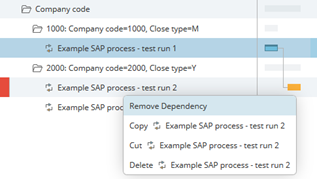
- Error messages indicate mismanagement (wrong selection).
Filter, Search, and Multi Edit
When a group or single process is selected, the spyglass icon appears on the top right-hand side of the Orchestrator.

Enter the values you are searching for and press the Submit Search button.

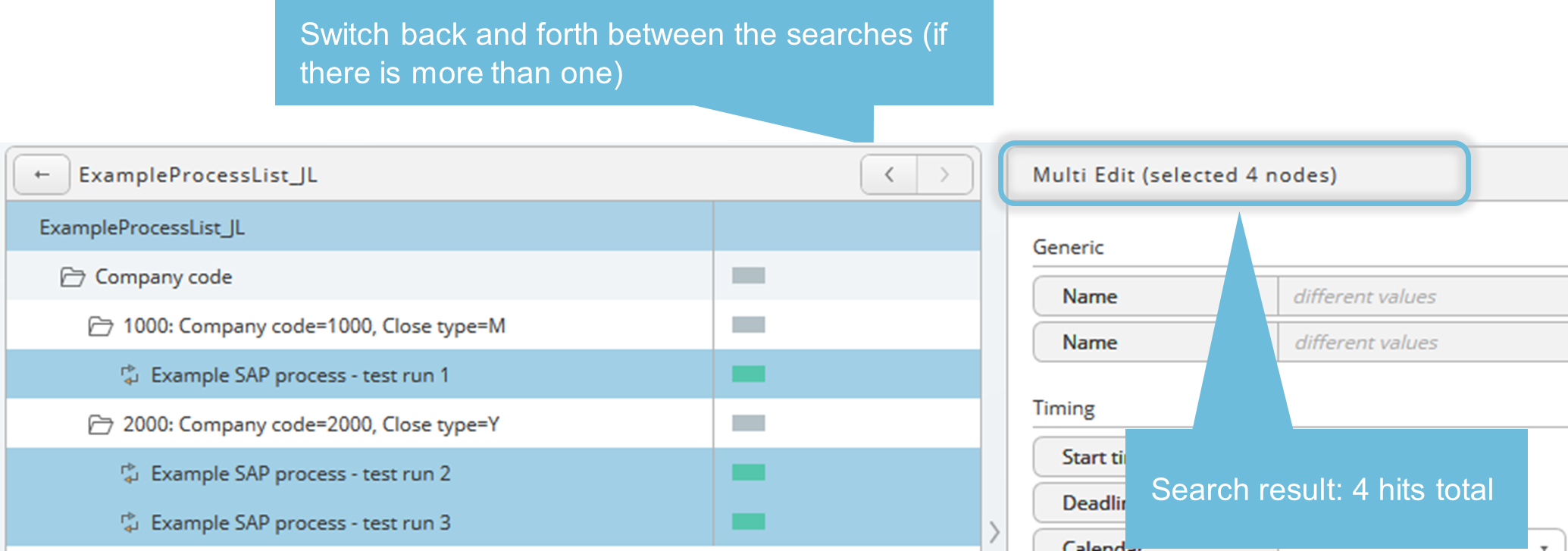
The Multi Edit function can be used to replace or to fill parameter values if the search result consists of more than one hit. In the example below, the parameter Fiscal year is filled with the value 2020. When you enter values on a search result, the multi edit will automatically be executed on the selected nodes.

Save and Submit
Save the process list, go back to the overview, and press submit button to start the process list. Once a process list has been submitted, the process list run can be controlled over the Workbench or Inbox on request.

note
Save* and Submit buttons are disabled when the user has no authorization.
Parameters
Mode- when set toadminit allows you to disable privilege checks to improve performance, the privilege checks will be performed at a later stage and will veto any process the user cannot submit.
financeTopic
